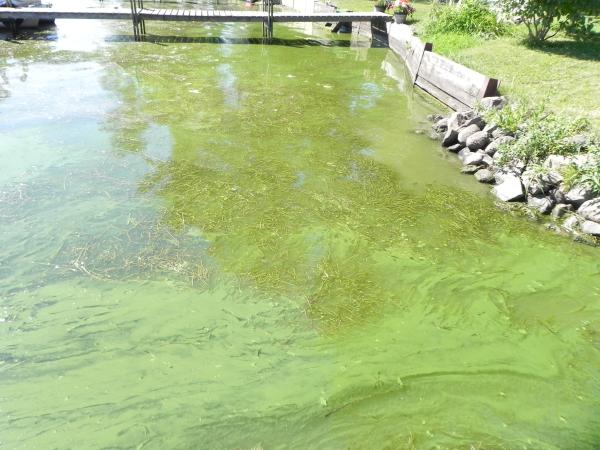For the most part, algae, that green ooze found floating on various bodies of water, has long been considered a temporary issue. It blooms into an annoyance and eventually dissipates, and disappears.
Unfortunately, just because summer is long gone, that doesn't mean algae is gone, too. On bodies and waterways large and small, it's hardly disappearing. It's a very real problem that isn't going anywhere, posing health risks to those living nearby who interact with these waters. Drinking water is also being affected, and significant efforts being taken on both federal and local levels to halt the risks are failing to solve the problem.
A special investigation just published by the Associated Press shows that despite tens of billions of dollars being spent for research, testing and raising public awareness across the country – in Florida, the Great Lakes, and untold other areas – algae levels aren't dropping, they're rising. Moreover, of more than 1,100 lakes and reservoirs studied by the Environmental Protection Agency and U.S. Geological Survey, a toxin created by algae that causes human sickness was found in more than one-third of them. It's a complex issue, which includes the subject of fertilizer runoff from farms, but it's one well worth reading about. Here's what else the AP's detailed investigation found.
The health implications are many, and profound. Algae's sickening effects plague those who enter these tainted waters, and even those who remain near it for too long. And for water sources that contribute to drinking water, even after being run through filtration plants, nearby populations can be sickened as well.
 "California last year reported toxic blooms in more than 40 lakes and waterways, the most in state history," the AP reported. "New York created a team of specialists to confront the mounting problem in the Finger Lakes, a tourist magnet cherished for sparkling waters amid lush hillsides dotted with vineyards. Two cities reported algal toxins in their drinking water in 2016, a first in New York." And near western Lake Erie, a massive algae slick grew. "The largest on record appeared in 2015, blanketing 300 square miles — the size of New York City."
"California last year reported toxic blooms in more than 40 lakes and waterways, the most in state history," the AP reported. "New York created a team of specialists to confront the mounting problem in the Finger Lakes, a tourist magnet cherished for sparkling waters amid lush hillsides dotted with vineyards. Two cities reported algal toxins in their drinking water in 2016, a first in New York." And near western Lake Erie, a massive algae slick grew. "The largest on record appeared in 2015, blanketing 300 square miles — the size of New York City."
And it's not just a U.S. problem, it's occurring around the globe, like in China (see adjacent photo).
So what is algae, what are its effects and what causes it to flourish?
The EPA describes it as "microscopic plants which contain chlorophyll and live floating or suspended in water. They also may be attached to structures, rocks or other submerged surfaces. They are food for fish and small aquatic animals. Excess algal growths can impart tastes and odors to potable water. Algae produce oxygen during sunlight hours and use oxygen during the night hours. Their biological activities appreciably affect the pH and dissolved oxygen of the water."
When algae formations are found to be toxic they often create the toxin "microcystin, which can cause nausea, fever and liver damage in humans and kill animals," the AP reports. And "when blooms aren’t toxic, they can turn waters ugly shades of green or other colors, stink like rotten vegetables, foul beaches and kill fish by sucking oxygen from the water as they decompose." The Centers for Disease Control reports that "exposures can result in symptoms that affect the skin, stomach and intestines, lungs, and nervous system."
Earlier this month, as a result of drinking water tainted with algae in Toledo, Ohio, which is pulled from Lake Erie, more than 100 residents were sickened, according to the CDC. Florida's Lake Okeechobee affected nearby beaches last year, prompting the governor to issue a state of emergency, and in Utah, more than 100 people were sickened after swimming in the state's largest freshwater lake.
Another troubling fact: "Boiling water does not remove algal toxins and can increase the amount of toxin in the water," the CDC writes on its website. "Be aware of advisories and health risks related to consuming contaminated fish and shellfish."




